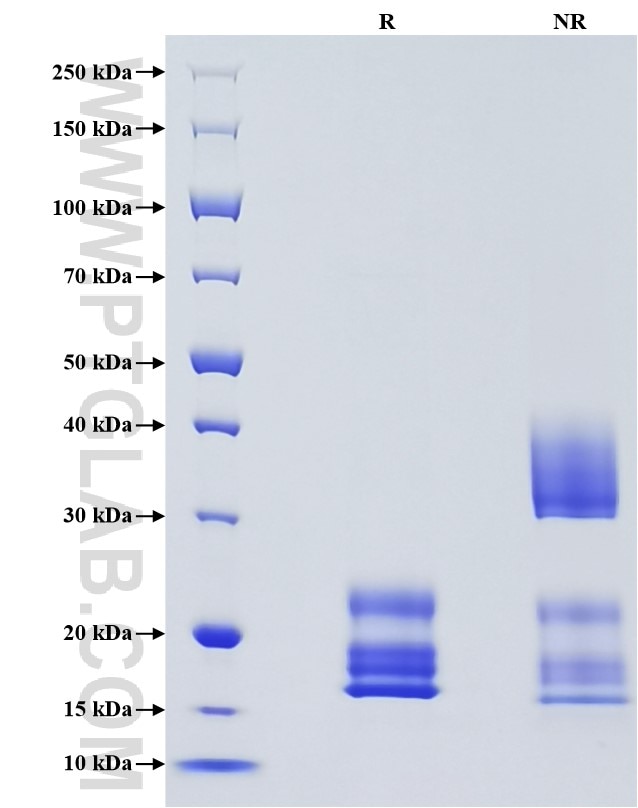Recombinant Human Beta-2-Microglobulin protein (Myc Tag, His Tag)
Species
Human
Purity
>90 %, SDS-PAGE
Tag
Myc Tag, His Tag
Activity
not tested
Cat no : Eg31815
Validation Data Gallery
Product Information
| Purity | >90 %, SDS-PAGE |
| Endotoxin | <0.1 EU/μg protein, LAL method |
| Activity |
Not tested |
| Expression | HEK293-derived Human Beta-2-Microglobulin protein Ile21-Met119 (Accession# P61769) with a Myc tag and a His tag at the C-terminus |
| GeneID | 567 |
| Accession | P61769 |
| PredictedSize | 16.7 kDa |
| SDS-PAGE | 16-25 kDa, reducing (R) conditions |
| Formulation | Lyophilized from 0.22 μm filtered solution in PBS, pH 7.4. Normally 5% trehalose and 5% mannitol are added as protectants before lyophilization. |
| Reconstitution | Briefly centrifuge the tube before opening. Reconstitute at 0.1-0.5 mg/mL in sterile water. |
| Storage Conditions |
It is recommended that the protein be aliquoted for optimal storage. Avoid repeated freeze-thaw cycles.
|
| Shipping | The product is shipped at ambient temperature. Upon receipt, store it immediately at the recommended temperature. |
Background
Beta-2-microglobulin (B2M) is a 12-kDa protein comprised of 99 amino acids. B2M is a component of MHC class I molecules, which are present on the surface of nearly all nucleated cells. It can be found in body fluids under physiologic conditions as a result of shedding from cell surfaces or intracellular release. B2M has various biological functions, including antigen presentation. Serum B2M is regarded as a marker of disease severity in renal injury, infections, amyloidosis, and aging-related diseases. Investigations reveal that increased synthesis and release of B2M are present in several malignant diseases including multiple myeloma, lymphoma, and solid tumors.
References:
1. D Güssow, et al. (1987) J Immunol. 139(9):3132-8. 2. Jin Xie, et al. (2003) Blood. 101(10):4005-12. 3. Takeo Nomura, et al. (2014) Anticancer Agents Med Chem. 14(3):343-52.. 4. Hanbing Wang, et al. (2021) Cancer Lett. 517:96-104.

